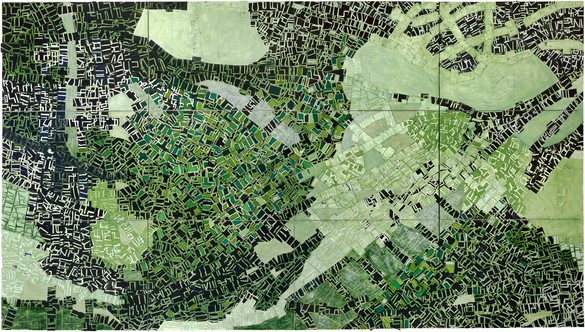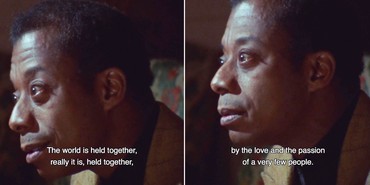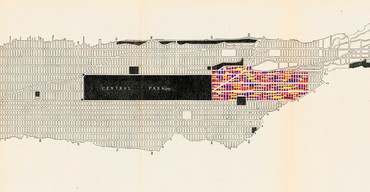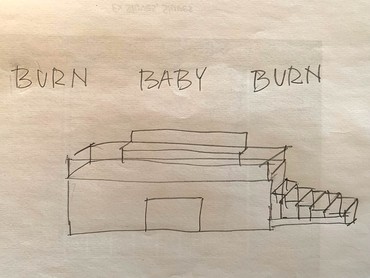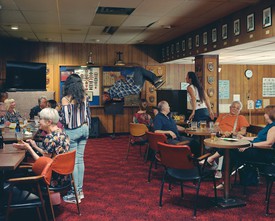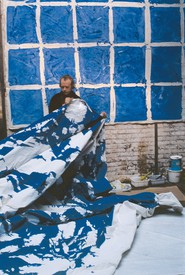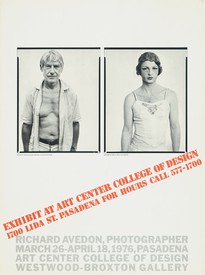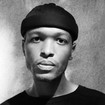
Antwaun Sargent is a writer and critic. His writing has appeared in The New York Times, The New Yorker, and The New York Review of Books, among other publications, and he has contributed essays to museum and gallery catalogues. Sargent has co-organized exhibitions including The Way We Live Now at the Aperture Foundation in New York in 2018, and his first book, The New Black Vanguard: Photography between Art and Fashion, was released by Aperture in fall 2019. Photo: Darius Garvin
I.
A growing number of Black artists are using their dynamic practices in myriad instrumental ways to consider how personal and public, institutional and psychic space can be generated through artworks rooted equally in history and futurity as a way to explore the liberatory possibilities of spatial empowerment. These artists are engaged in what the art historian and writer Sarah Lewis has termed “groundwork.”1 Lewis explores the concept in the context of stand-your-ground laws, applying it to such artists as Mark Bradford, Hank Willis Thomas, Amy Sherald, and others who have deployed in specific works “a set of aesthetic strategies through which the literal and figurative meaning of the ground is destabilized productively to establish new conditions.” Lewis’s framework is also useful in understanding how Black artists have “innovated conceptual, compositional, and material tactics” in a broader cultural context where such factors as institutional discrimination, community divestment, and increased market visibility have led Black artists to engage in groundwork as a way to rethink and rework spatial inequalities.2 Artists including the painter Titus Kaphar established NXTHVN, a nonprofit art center in New Haven, Connecticut, with the specific goal of empowering “emerging artists and curators of color through education and access.” “I see what I am doing as a penance,” explains Kaphar, “a kind of reparations, money coming in from these different sources and we are deploying it back in the community.”3
Kaphar is a part of a new group of artists, such as Theaster Gates, Lauren Halsey, and the late Noah Davis, who have used their practices to establish physical spaces that catalyze opportunity and provide badly needed material goods in their local communities. They join a lineage of artists—the painter Rick Lowe, say—making social works that can only be completed with communal participation. Two decades ago, Lowe created the community art-platform Project Row Houses in Houston, Texas. The platform is a network of more than twenty buildings in the Third Ward section of the city that is responsive to artists and to the needs of the neighborhood, establishing a program, for example, that provides shelter to unhoused single mothers. Lowe’s mission of responding creatively to local problems shares qualities with the artist Linda Goode Bryant’s decades-long practice of space art. Bryant sees “the creation of space as art with real-life consequences.”4 In 1974, Bryant opened New York’s first Black-run gallery, Just Above Midtown, which showed artists such as David Hammons and Lorraine O’Grady. More recently, Bryant has been focusing on a living sculpture, “The Cube,” a multilevel community hub where growing happens through art and food. The idea is directly linked to her work with Project EATS, an organization she founded that operates urban farms across the city as a way to address food deserts in underserved communities.
These notions are not just being enacted in physical spaces. The painter Torkwase Dyson has developed an abstraction that centers on what she calls “Black Compositional Thought.” It’s an evolving theory exploring how geographies are composed and inhabited by Black bodies, and how the properties of energy, space, and scale can form networks of liberation. Dyson elaborates:
I ask myself, how do black people survive abstraction today as the scope, scale, and density of matter is changing all around us due to climate change? I begin to answer by looking at what I call black compositional thought. Abstract drawing can lend itself to the intellectual and psychological pursuit of pulling black compositional thought close. Really close, inside close. From the black-inside-black position, I stand in front of a surface with my mind in complete awareness of form as power. As I begin to convey shape, line, movement, weight, scale, proximity, and perspective, representations of subjects oscillate between scaled diagrammatic images and expressive drawings. In the act of making I understand that it is the integrations of forms folded into the conditions of black spatial justice where I begin to develop compositions and designs that respond to materials. Here I open up the power of abstract representation while engaging with the emotional implications of design space itself.5
An investment in futurity, a redefinition with “the power to imagine beyond current fact,” as theorist Tina Campt argues, “and to envision that which is not, but must be,” is also at the center of Halsey’s practice.6 She constructs cool urban visions, grounded in self-regard and empowerment, that she has termed “#fubuarchitecture,” after the Black-owned ready-to-wear label FUBU (For Us By Us). #fubuarchitecture can be seen as a kind of Black-power architectural fabulation that Halsey is developing in paintings, collages, sculpture, and real space. These works function together as “an endless becoming,” entailing a visualizing of communal liberation, an inclusive and self-reliant Black community achieved through funk, fantasy, and the experimental development of space: gardens, lawns, makeshift advertisements, shrines, vacant lots, churches, liquor stores, houses. Halsey’s work thang (2020) zeroes in on her own neighborhood in South Central Los Angeles, remaking it in her own image. Stylish Black women and men appear, cut from found materials, as do pyramids, unicorns, statues, a Louis Vuitton–monogrammed California bungalow, and advertisements for local businesses such as Urban Books & Thangs. We still here, there (2018) is a statement of empowerment against gentrification; gotta get over the hump? (2010) is a sprawling collage work in which emblems of Black mysticism and informal communion collide.7
The artist Carrie Mae Weems occasionally convenes Black artists and writers, as she did in the events The Shape of Things, at Manhattan’s Park Avenue Armory in 2017, and Carrie Mae Weems live: Past Tense/Future Perfect, at the Guggenheim Museum in 2014. Her photographic series Kitchen Table (1990) and Roaming (2006) involve reconsideration of the functions of space, both private and public. In the black-and-white images in Museums (2006– ), according to Weems, “a woman of a certain age, wearing a fabulous, sexy, and innocuous black dress,” is seen in public streets, in vacant interiors, and outside the most august museums.8 Her presence if not her person is visible, challenging edifice, haunting the scene, questioning who belongs, who has been excluded, and why. It is a poetic look at how authority, or the lack thereof, is racialized, feminized, or sexualized and impressed upon the body through spatial absence.
Historically, these approaches can be traced back to a fusing of racial consciousness with artistic production that developed across the twentieth century, from the Harlem Renaissance through the Black Arts Movement, generating spaces such as the Studio Museum in Harlem and artist collectives such as Spiral, Kamoinge, Africobra, and others, all formed to consider notions of making community-centered works that challenged the status quo. In much the same way that Joseph Beuys theorized in the 1970s about “social sculpture”—art that could transform society and its institutions of power—Black artists and thinkers of that era, such as Imamu Amiri Baraka, agitated for Black artists to “move to establish our own institutions” rooted in self-determination, self-respect, and self-defense. They would function, in Baraka’s vision, as “pyramid[s] of revolutionary purpose.”9
II. Joseph Beuys: A SOCIAL ORGANISM AS A WORK OF ART
III.
social sculpture
V.
Black sound has functioned as an important conceptualization of Black space. Catch the beat.
VI.
What is a Black social sculpture? Must it function differently from Beuys’s notion? Perhaps it has to address slave labor, redlining, white flight, subprime mortgages, gentrification, a history of degradation and undoing. Perhaps it doesn’t. Maybe the vision begins in the future, and the builders of that sculpture will lay foundations that are out of this world, undreamed. Fabricated fabulations for bricks. “A narrative,” as the scholar Saidiya Hartman argues, “written from nowhere. From the nowhere of the ghetto and the nowhere of the utopia.”10 Perhaps we use overlooked spaces of freedom—the Black living room, the spice rack, the cookout, the juke joint, the rent party—as the blueprints for liberation sculpture. Those spaces, invented beyond what was on the horizon, present a negation of the negation—strategies and tactics of resilience and investment that claim Black tomorrows. What we need are spheres in which Black betterment is centered on the social. I know, the sculpture must be about more than just redress or relief; it will require participation, communal and institutional, to establish realms of advantage. A sculpture where wants can be pursued, fulfilled, endlessly.
IX.
We cannot create what we cannot imagine. —Lucille Clifton
X.
Kellie Jones: The piece that was at Art on the Beach, does it have a name?
David Hammons: I called it Delta Spirit because it was about that kind of spirit that’s in the South. I just love the houses in the South, the way they built them. That Negritude architecture. I really love to watch the way Black people make things, houses, or magazine stands in Harlem, for instance. Just the way we use carpentry. Nothing fits, but everything works. The door closes, it keeps things from coming through. But it doesn’t have that neatness about it, the way white people put things together; everything is a 32nd of an inch off.11
XI.
An informal network of Black spaces, being constructed both physically and digitally, uses art as a catalyst to engage in social labor and to address aspects of a vast history of lack. They include: Project Row Houses, Houston; Stony Island Arts Bank, Chicago; NXTHVN, New Haven; Project EATS, New York; Black Rock Senegal, Dakar; See In Black; the Underground Museum, Los Angeles; Home by Ronan Mckenzie, London; Art + Practice, Los Angeles; ARTS.BLACK; Conceptual Fade, Philadelphia; Yardy NYC, New York; We Buy Gold, Brooklyn; Medium Tings, Brooklyn; BKhz, Johannesburg; Black Artist Retreat, Chicago; SON, Los Angeles; Jenkins Johnson Projects, Brooklyn; Black Art Library, Detroit; Summaeverythang, Los Angeles; Bubblegum Club, Johannesburg; Ghetto Gastro, Bronx; etc.
xii. Black Wall Street.
XIII.
Blackness is made and remade in location.12
XIV.
A communal space, common space, community space . . .
XV.
Fritz Henle, Cleaning woman in Museum of Modern Art, c. 1948
XVI.
MANIPULATE
the space
to become
A
landscape
XVII.
The government pays me
nine thousand dollars a year
to protect the East Wing
So I haunt it.
Visiting hours are over.
The silent sentry is on duty.
An electric eye patrols the premises.
I’m just here
putting mouth on the place.
Modigliani whispers to Matisse.
Matisse whispers to Picasso.
I kiss the Rose in my pocket
and tip easy through this tomb of thieves.
—Essex Hemphill13
XVIII.
The deploying of space to benefit the community is the art.
XIX.
David Adjaye: I want the architecture to make you feel the weight of an enormous body of history.14
XX.
500 W. Oak.
XXI.
Every year these four photographs
Taught us how English was really a type of
trick math:
like the naked Emperor, you could be a
King
capable of imagining just one single dream;
or there could be a body, bloody,
at your feet—then you could point at the
sky;
or you could be a hunched-over cotton-
picking shame;
or you could swing from a tree by your
neck into the frame.
—Robin Coste Lewis15
XXIII.
Black space has no style, no signature or formula. It does what needs to be done. Black space tells you what is possible and what is yet to come. Black space is a root for the future: a making a way out of no way.
XXIV.
If we control the spaces of power and meaning, the fear is we will do to you what you are doing to us.
XXV.
The shade provides shelter.
XXVI.
Black people are constantly in the space of remigration, searching, landing, moving, returning.
xxvii. The Black body as a utopic space.
XXVIII.
The Black Reconstruction Collective (BRC) asks three questions:
What is the architecture of Black futures?
What does it mean to imagine Black reconstruction today?
What is the architecture of Reparations?
XXIX.
Imagine a Black space. What does it feel like?
XXX.
Walter Hood: There were Apollos in every neighborhood.16
Put another way: all space has the potential to be Black social space.
XXXI.
What else can art do?
1See Sarah Lewis, “Groundwork: Race and Aesthetics in the Era of Stand Your Ground Law,” Art Journal 79, no. 4 (2020), pp. 92–113.
2Ibid.
3Titus Kaphar, conversation with the author, March 2021.
4Linda Goode Bryant, conversation with the author, December 2020.
5Torkwase Dyson, “Black Interiority: Notes on Architecture, Infrastructure, Environmental Justice, and Abstract Drawing,” Pelican Bomb, January 9, 2017. Available online at http://pelicanbomb.com/art-review/2017/black-interiority-notes-on-architecture-infrastructure-environmental-justice-and-abstract-drawing (accessed April 5, 2021).
6Tina M. Campt, Listening to Images (Durham, NC, and London: Duke University Press, 2017), p. 17.
7See Antwaun Sargent, “The Future Will See You Now: The Private Worlds of Black Desire,” in “Utopia,” Aperture no. 241 (Winter 2020), pp. 91–92.
8Carrie Mae Weems, quoted in Sargent, “Carrie Mae Weems on a Career of Challenging Power and Black Representation in Art,” Artsy, October 31, 2016. Available online at https://www.artsy.net/article/artsy-editorial-carrie-mae-weems-on-a-career-of-challenging-power-and-black-representation-in-art (accessed April 5, 2021).
9Imamu Amiri Baraka, “Counter Statement to Whitney Ritz Bros,” in Tom Lloyd, ed., Black Art Notes, 1971 (reprint ed. Brooklyn: Primary Information, 2012), pp. 10–12.
10Saidiya Hartman, Wayward Lives, Beautiful Experiments: Intimate Histories of Social Upheaval (New York and London: W. W. Norton, 2019), p. 6.
11Kellie Jones and David Hammons, in Jones, “Interview: David Hammons,” Art Papers, July/August 1988. Available online at https://www.artpapers.org/interview-david-hammons/ (accessed April 5, 2021).
12Christina Sharpe, “Black Gathering: An Assembly in Three Parts,” in Sean Anderson and Mabel O. Wilson, Reconstructions: Architecture and Blackness in America, exh. cat. (New York: The Museum of Modern Art, 2021), p. 25.
13Essex Hemphill, “Visiting Hours,” in Earth Life: Poems (Washington, DC: Be Bop Books, 1985).
14David Adjaye, quoted in Calvin Tomkins, “Annals of Architecture: A Sense of Place,” The New Yorker, September 23, 2013.
15Robin Coste Lewis, “Frame,” in Voyage of the Sable Venus and Other Poems (New York: Alfred A. Knopf, 2015), pp. 144–45.
16Walter Hood in conversation with Rick Lowe, Gagosian Quarterly, Summer 2021.
Social Works: Curated by Antwaun Sargent, Gagosian, 555 West 24th Street, New York, June 24–August 13, 2021
The “Social Works” supplement also includes: “Lauren Halsey and Mabel O. Wilson”; “The Archives of Frankie Knuckles: Organized by Theaster Gates”; “Carrie Mae Weems and Maya Phillips”; “Sir David Adjaye OBE”; “Allana Clarke and Zalika Azim”; “Rick Lowe and Walter Hood”; and “Linda Goode Bryant and DeVonn Francis”
